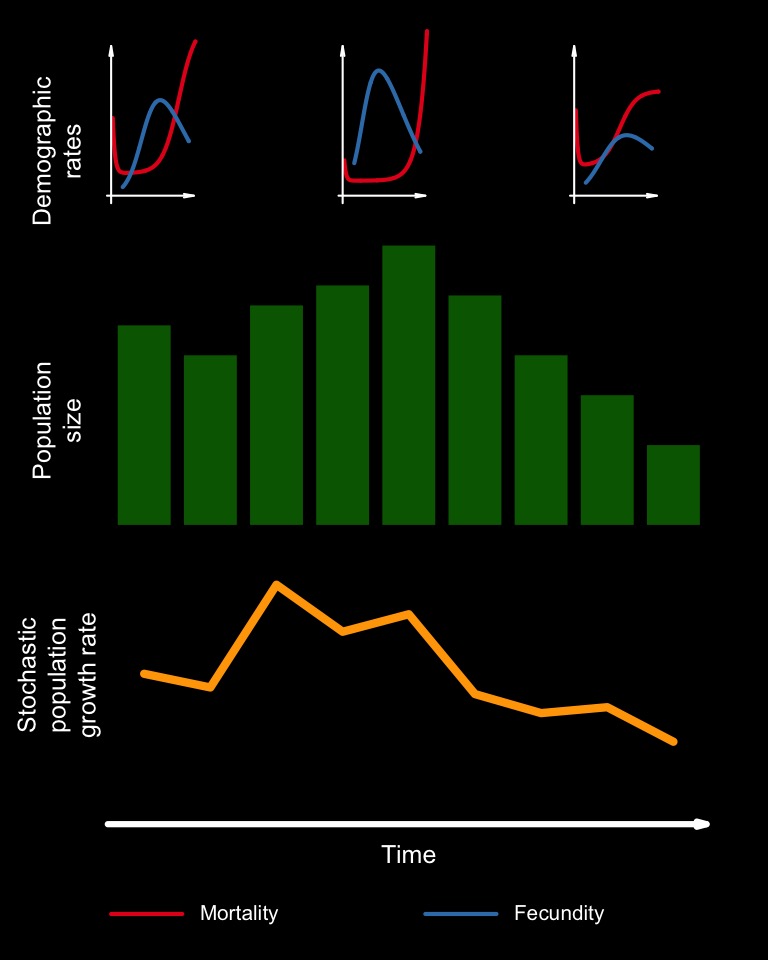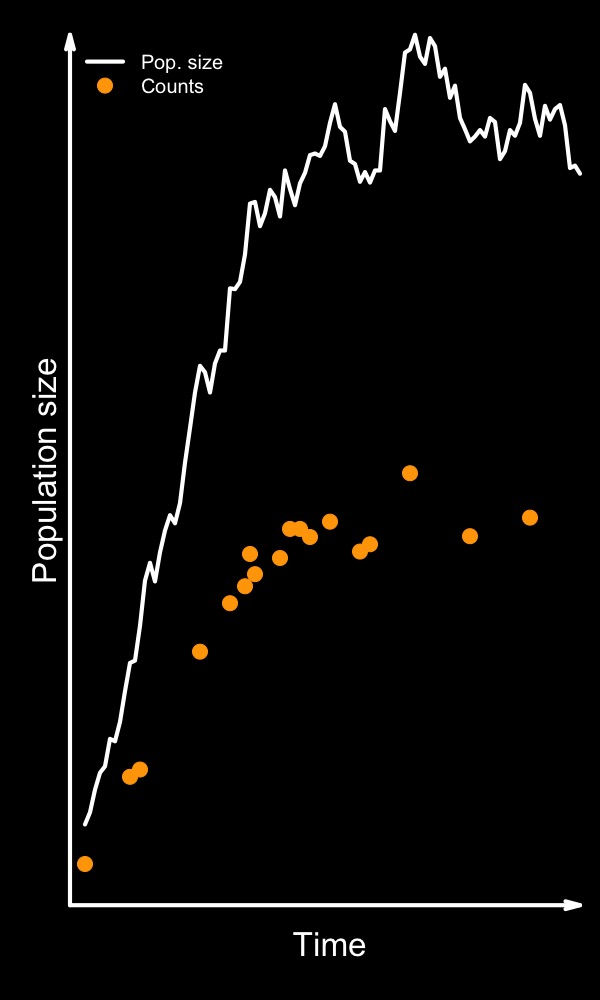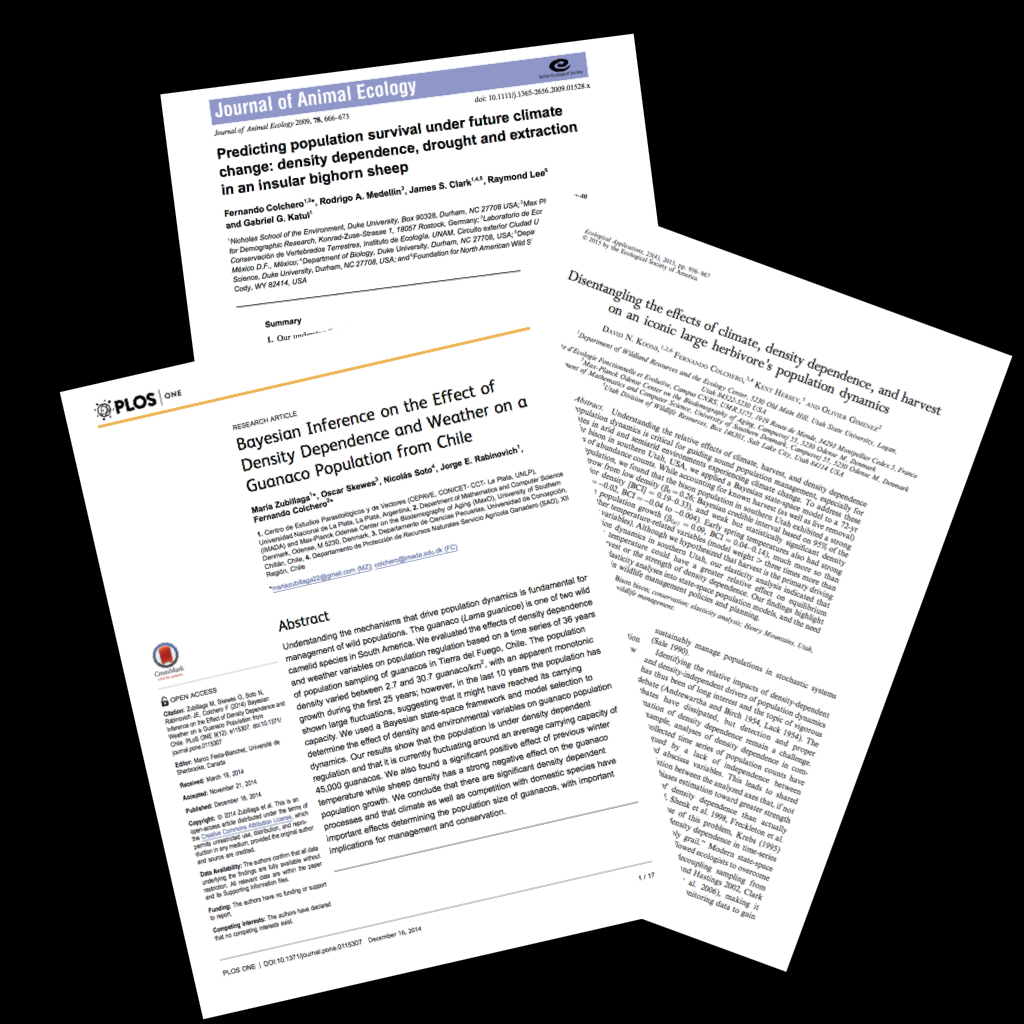

|
| Home | People | Projects | Publications | Contact |
Animal population dynamicsAge-structured stochastic population modelingSurvival and fecundity in natural populations are affected by environmental perturbations and by internal mechanisms related to evolutionary processes. Today we know that the environment affects these demographic rates either by regulating the availability of resources, or indirectly through changes in general conditions (e.g. temperature, humidity, etc.). On the other hand, researchers have identified internal mechanisms such as those related to ageing, that dictate how mortality and fecundity change with age. However, the interplay between these intrinsic mechanisms and extrinsic environmental processes in the regulation of demographic rates and population dynamics is still poorly understood. |
 |
 |
In our group we are exploring how populations with different age-specific demographic rates (i.e. survival and fecundity) respond to the environment and how this affects stochastic population growth rates. In a paper published in Ecology Letters (Colchero et al. 2019), we have found that stochastic population growth rates and their long-term averages vary dramatically as a function of the age-trajectories in survival and fecundity. Furthermore, we found that modelling these populations by grouping ages into general stages (e.g. juveniles, sub-adutls, and adults), will produce markedly different stochastic population growth rates than models that account for the full age-dependency in demographic rates. |
State-space modelingIn the last few decades we have witnessed an increase in the development of statistical and computational methods that facilitate the analysis of complex temporal processes. State-space models are amongst the most widely used methods to analyse time series data where observations are obtained with error (De Jong 1988, Jøgersen 2007). These models have been used on a range of applications, such as image processing (Smith and Brown 2003, Riera et al. 2004), fisheries (Millar and Meyer 2000, Nielsen and Berg 2014), and animal population modelling (Clark and Bjørnstad 2004, Colchero et al. 2009). |
 |
 |
To understand the effect environmental perturbations, density dependence and exploitation on animal population growth, we have extended Clark and Bjørnstad's (Clark & Bjørnstad 2004 Ecology, 85: 3140-3150) Bayesian state space model to accomodate extractions and different distrubutions for the process and data models. We have applied these methods to datasets from different populations such as desert bighorn sheep (Ovis canadensis) from the Tiburón Island in México (Colchero et al. 2009), Guancos (Lama guanicoe) in Tierra del Fuego, Chile (Zubillaga et al. 2014), or bison (Bison bison) in Northern USA (Koons et al. 2015). |

|